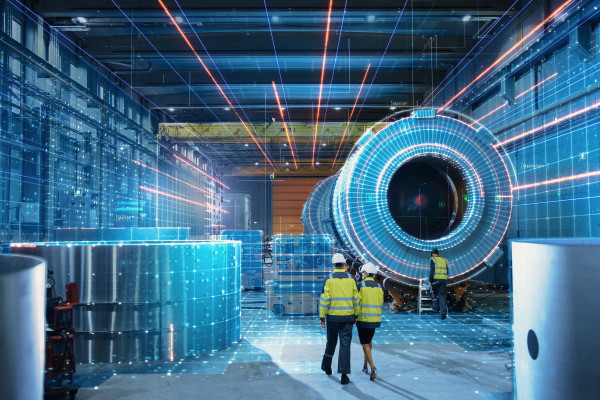Understanding Edge Computing:
At its core, edge computing is a distributed computing model that enables data processing and analysis at or near the data source, rather than relying on centralized cloud servers. It leverages a network of edge devices, such as IoT sensors, gateways, and edge servers, to perform computations closer to where data is generated. This proximity reduces latency, enhances real-time decision-making, and minimizes the need for extensive data transfers to the cloud.
Technologies Empowering Edge Computing:
Technologies Empowering Edge Computing:
- Internet of Things (IoT) devices: The proliferation of IoT devices has been instrumental in driving the adoption of edge computing. These devices generate massive amounts of data, and by processing it at the edge, organizations can extract valuable insights in real-time.
- Fog Computing: Fog computing extends the capabilities of edge infrastructure by leveraging nearby network nodes, such as routers or gateways, to perform certain computing tasks. This approach further enhances the scalability and responsiveness of edge computing deployments.
- Edge Analytics and Machine Learning: Edge analytics and machine learning algorithms enable real-time analysis and decision-making at the edge. By processing data locally, edge devices can quickly respond to events, detect anomalies, and provide immediate insights without relying on a centralized cloud infrastructure.
Applications of Edge Computing:
Autonomous Vehicles: Edge computing plays a critical role in autonomous vehicles by enabling real-time decision-making, reducing response times, and enhancing overall safety on the roads. By processing sensor data locally, vehicles can make split-second decisions without relying solely on cloud connectivity.
Healthcare: Edge computing has transformative potential in healthcare, empowering remote patient monitoring, enabling faster diagnosis through real-time analysis of medical data, and improving emergency response times. It also addresses privacy concerns by keeping sensitive patient information within local networks.
Smart Cities: Edge computing can optimize resource allocation, traffic management, and public safety in smart city initiatives. By processing data locally, smart city infrastructure can respond rapidly to changing conditions, improve energy efficiency, and enhance citizen experiences.
Industrial IoT: In industrial settings, edge computing facilitates real-time monitoring, predictive maintenance, and process optimization. By processing sensor data at the edge, manufacturers can detect anomalies, minimize downtime, and optimize production processes.
Retail: Edge computing enables personalized shopping experiences, efficient inventory management, and targeted advertising in the retail sector. By processing data closer to the point of sale, retailers can deliver real-time recommendations, analyze customer behavior, and optimize supply chain operations.
Benefits and Possibilities of Edge Computing:
Edge computing offers numerous benefits and opens up exciting possibilities for industries and individuals:
- Reduced latency and improved response times for time-sensitive applications.
- Enhanced data privacy and security by processing data closer to its source, reducing the risk of unauthorized access or data breaches.
- Bandwidth optimization and reduced network congestion by offloading data processing to edge devices, minimizing the need for data transfers to the cloud.
- Offline functionality and resilience in the face of intermittent connectivity, ensuring continuous operations even when cloud connectivity is limited or temporarily unavailable.
- Scalability and cost-effectiveness for large-scale deployments, as edge computing reduces the reliance
on centralized cloud infrastructure and allows for distributed processing across edge devices.
The Future of Edge Computing:
The future of edge computing is incredibly promising, with several exciting developments on the horizon:
- Integration with Emerging Technologies: Edge computing will play a crucial role in enabling emerging technologies such as 5G, artificial intelligence (AI), and augmented reality (AR). The combination of edge computing and 5G networks will unlock unprecedented speed and low latency, paving the way for innovative applications and services. AI and AR will benefit from edge computing by enabling real-time processing of data-intensive tasks, delivering immersive experiences, and enhancing overall performance.
- Innovative Applications: Edge computing will continue to drive innovation across various industries. We can expect to see the rise of autonomous drones that make split-second decisions based on local processing, smart grids that optimize energy distribution at the edge, and immersive experiences that seamlessly blend virtual and physical worlds.
- Edge-to-Cloud Integration: Edge computing will become integral to hybrid architectures that seamlessly integrate edge devices with centralized cloud infrastructure. This integration will enable efficient data processing and analytics, leveraging the strengths of both edge computing and cloud computing. Edge devices will act as intelligent gateways, performing initial data processing and filtering before transmitting relevant data to the cloud for further analysis and storage.
- Edge-as-a-Service (EaaS): The concept of Edge-as-a-Service will gain traction, allowing organizations to leverage edge computing capabilities without the need for extensive infrastructure investments. EaaS will provide a platform for deploying and managing edge applications, enabling businesses to quickly scale and adapt to changing demands.
Conclusion:
Edge computing is revolutionizing the way we process and analyze data, bringing computation closer to the source and unlocking tremendous possibilities for industries and individuals alike. With its ability to reduce latency, enhance security, optimize bandwidth, and enable real-time decision-making, edge computing is transforming autonomous vehicles, healthcare, smart cities, industrial IoT, and retail. As we look to the future, edge computing will integrate with emerging technologies, drive innovation, and shape hybrid architectures. Embracing the power of distributed intelligence, we are poised for a future where real-time processing and seamless connectivity redefine our digital landscape.
So, join the edge computing revolution and unlock its limitless potential. Experience the benefits of reduced latency, enhanced security, and real-time insights. Embrace a future where distributed intelligence transforms industries, empowers individuals, and shapes our digital world.







